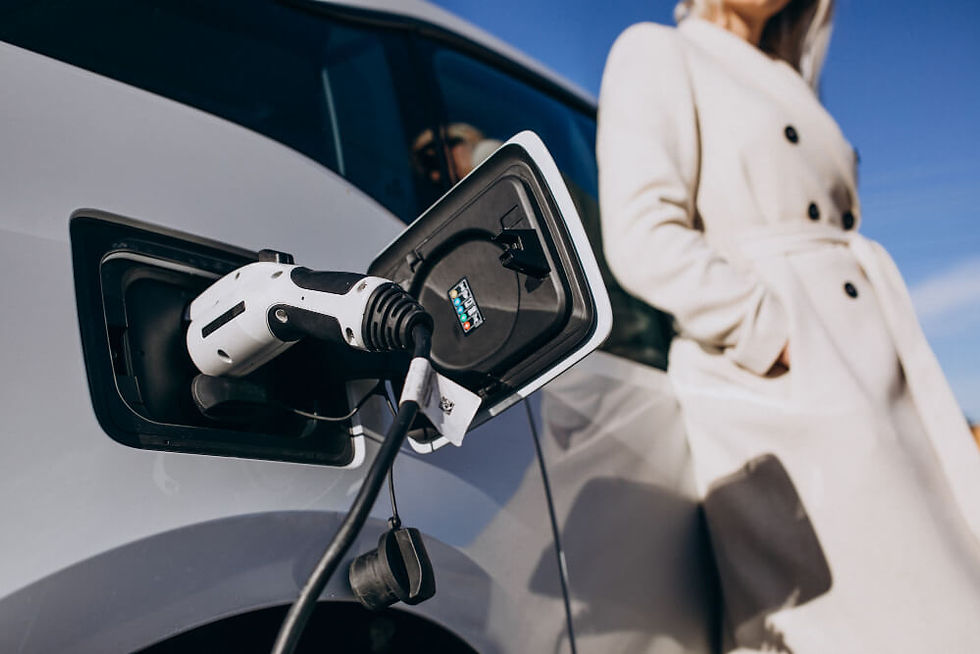How Load Balancing Works in EV Charging Networks
- Social Media
- Apr 21
- 3 min read
As electric vehicles (EVs) become more popular, the demand for EV charging point installation is rising everywhere—from homes to highways, offices to parking garages. But there’s one thing many people overlook when setting up charging stations: how the energy is distributed.

This is where load balancing comes into play. It's a simple idea with a powerful impact: how do we share electricity smartly among multiple EV chargers so everyone gets a fair, efficient charge—without overloading the system?
Let’s break it down.
What Is Load Balancing?
Imagine a building with five EV chargers, but limited electrical capacity. If all five cars start charging at once, the system might get overloaded. Load balancing is the smart solution that divides available power among chargers in real time.
It ensures:
No circuit is overwhelmed
Every connected car gets energy
Power use stays within safe limits
Why It Matters for EV Charging Networks
When multiple EVs plug in simultaneously, the draw on electricity can spike. Without load balancing, this can lead to:
Blown fuses
Tripped breakers
Unhappy EV drivers
With load balancing, the system adjusts how much energy each vehicle gets, based on what’s available at the moment. It’s like having a traffic cop for electricity—keeping everything flowing smoothly.
Types of Load Balancing
There are two main types of load balancing in EV charging point installation:
1. Static Load Balancing
This method splits available power evenly between chargers. Simple and predictable.
✅ Good for smaller setups 🚫 Not responsive to real-time usage
2. Dynamic Load Balancing
This one’s smarter. It adjusts the power distribution based on:
How many EVs are charging
How much energy is being used elsewhere in the building
✅ Great for mixed-use sites
✅ More energy-efficient
🚫 Needs smart monitoring tech
Where You’ll See Load Balancing in Action
Load balancing is especially useful in:
Office parking lots
Apartment buildings
Shopping centers
Homes with multiple EVs
In all these spaces, EV charging point installation is growing—but electrical capacity isn’t always expanding at the same rate. Load balancing bridges that gap.
Real-Life Example (No Tech Jargon)
Think of it like Wi-Fi.
If ten people in a coffee shop are watching videos at once, the Wi-Fi slows down. But smart routers manage the load so everyone gets a decent connection.
Load balancing does the same thing, but with electricity.
Benefits of Load Balancing
Here’s why load balancing is worth considering when planning your EV charging point installation:
⚡ Maximizes available power
🛠️ Reduces need for expensive electrical upgrades
🔋 Improves charging efficiency
🚧 Prevents outages and overloading
🧩 Supports future expansion
It’s especially important in places with limited electrical infrastructure. Without it, adding more chargers could cause more problems than it solves.
Load Balancing + Smart Charging = A Perfect Match
When paired with smart charging systems, load balancing becomes even more effective. These systems can monitor energy usage in real time and make decisions instantly, optimizing the charging experience for everyone.
It’s not just about charging cars—it’s about using energy wisely.
So when considering your next EV charging point installation, make sure load balancing is part of the conversation.
Final Thoughts
EV charging is more than just plugging in—it’s about energy management. As demand grows, EV charging point installation needs to be smarter, not just more widespread.
Load balancing is a simple concept that plays a huge role behind the scenes. It keeps energy flowing, systems safe, and drivers happy.
So next time you hear someone talk about EV charging tech, you’ll know: it’s not just about the charger—it’s about how all the chargers work together.
✅ FAQs
1. Is load balancing necessary for every EV charging setup?
Not always. For a single EV charger at home, it’s usually not required. But if you have multiple chargers, especially in shared spaces, it becomes really important.
2. Will load balancing slow down my EV charging?
It might, slightly—but only when necessary to protect the system. It’s designed to prioritize safety and fairness, not speed.
3. Can I add load balancing later after EV charging point installation?
In many cases, yes. It depends on your charger setup and system compatibility. It’s best to plan ahead and include it from the start if multiple chargers are involved.







Comments